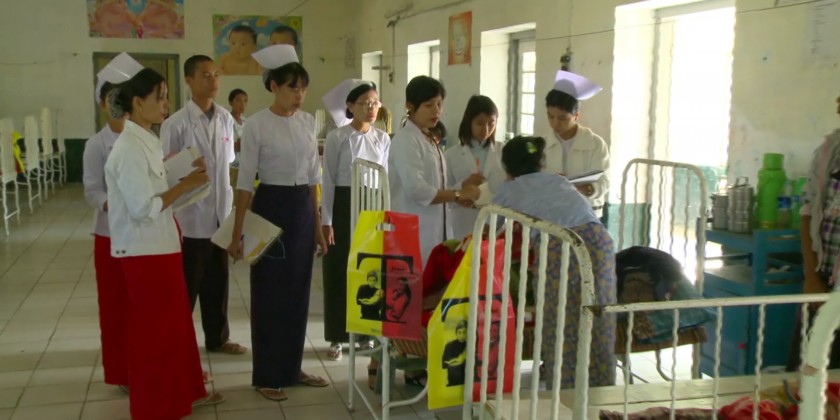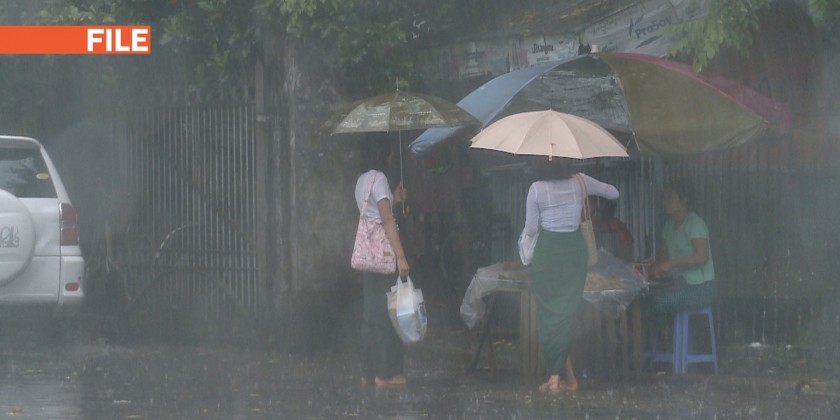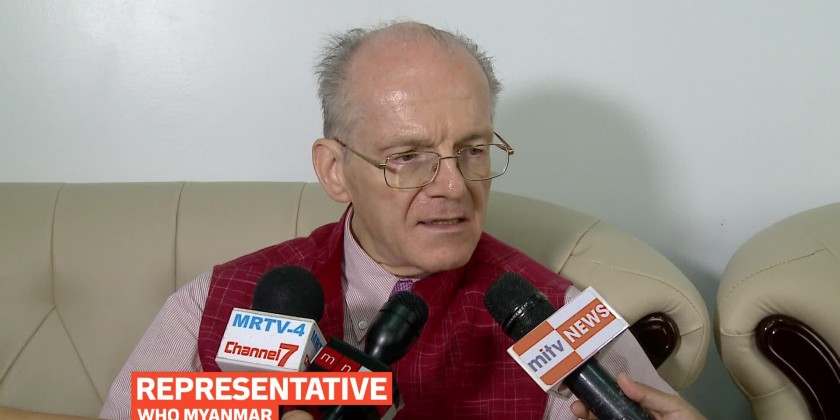




As the rate of contracting seasonal influenza H1N1 is getting rise in Myanmar, health authorities are making sure of protection and reduction of virus infection thoroughly.
H1N1 is one of the circulating flu viruses that are particularly in Myanmar coming at this time of year in the monsoon season. According to the data of Ministry of Health and Sports as of 7th July 2019, 30 out of 145 H1N1 patients died so farin Myanmar. The majority of cases have been reported from Yangon Region. WHO country representative claimed that H1N1 symptoms are not different from normal flu.
Representative, WHO Myanmar, Dr. Stephan Paul Jost said “In fact there are no symptoms specific to H1N1as destined for influenza. You wouldn’t know whether you have H1N1 or indeed any other circulating flu virus until it is laboratory confirmed and tested to the defect. The symptoms are through the influenza itself which are body ache, muscle ache, fever even high fever, and also dry cough. If you have a combination of these then definitely do seek the advice of a health professional quickly. There are no symptoms specific to H1N1by itself only there would be for influenza perceive”.
Vaccination is an effective way to prevent infection and severe outcomes caused by influenza viruses. It is especially important for people at higher risk of serious influenza complications, and for people who live with or care for high risk individuals.
Representative, WHO Myanmar, Dr. Stephan Paul Jost said “The flu vaccine does offer pretty good protection if the circulating flu viruses have a good match with the ones contained in the vaccine. And in fact two more antigens to make the vaccine of good fit for this current season apart from H1N1, there is H3N2 and also influenza B. The combination of those three antigens particularly to younger people offers very good protection sometimes 70 or 80 percent depends as I said on how closely the match is between the vaccine and the circulating the flu viruses in the environment where you are. It does decline a bit with efficiency in older age. It is less effective in people above 65 but WHO nevertheless recommends the high risk scope including people over 65 to take the seasonal flu vaccine because it does offer significant protections still. Other high risk scopes are pregnant women, children between 6 months and 5 years old but also health workers or people in the laboratories who are at slightly higher risk of professional exposure to H1N1or H3N2 or other circulating flu viruses. For them we also recommend seasonal flu vaccine to be given”.
WHO has provided 7,200 doses of seasonal flu vaccines through special initiative between the Ministry of Health and Sports. They are destined for health and laboratories workersat higher risksfrom the main referral hospitals from and also outside Yangon Region.
Representative, WHO Myanmar, Dr. Stephan Paul Jost said “Seasonal influenza vaccination is a good thing to do and especially as H1N1 is one of the three antigens in the seasonal flu vaccine. This has been updated every six months through a global effort of influenza surveillance and detection and countries submit up to date information to WHO in order to get the latest composition of the seasonal flu vaccine right”.
There are differences for the northern hemisphere and the southern hemisphere of the planet as the flu season happens to be in different times of the year. The flu season in northern hemisphere occurs during January and February while it happens during July and August in southern hemisphere. Myanmar is closer to the southern hemisphere than the northern one but has sometimes overlapped between the two and it’s important to bare that in mind for the pattern the flu might sure.
MITV is a broadcast TV brand intended for international and local English speaking consumers, launched on 31st March 2010 based in Yangon.